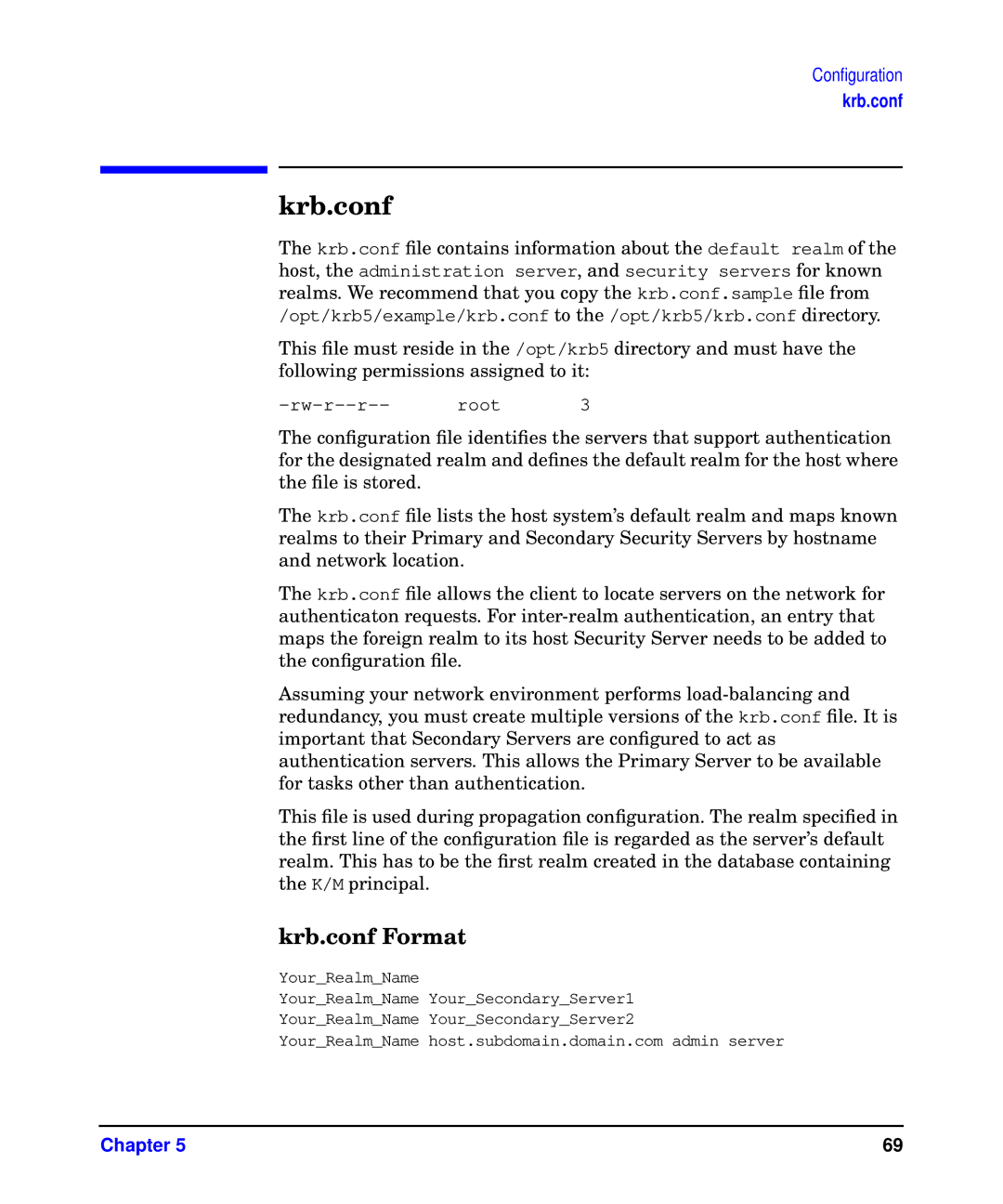
Configuration
krb.conf
krb.conf
The krb.conf file contains information about the default realm of the host, the administration server, and security servers for known realms. We recommend that you copy the krb.conf.sample file from /opt/krb5/example/krb.conf to the /opt/krb5/krb.conf directory.
This file must reside in the /opt/krb5 directory and must have the following permissions assigned to it:
root | 3 |
The configuration file identifies the servers that support authentication for the designated realm and defines the default realm for the host where the file is stored.
The krb.conf file lists the host system’s default realm and maps known realms to their Primary and Secondary Security Servers by hostname and network location.
The krb.conf file allows the client to locate servers on the network for authenticaton requests. For
Assuming your network environment performs
This file is used during propagation configuration. The realm specified in the first line of the configuration file is regarded as the server’s default realm. This has to be the first realm created in the database containing the K/M principal.
krb.conf Format
Your_Realm_Name
Your_Realm_Name Your_Secondary_Server1
Your_Realm_Name Your_Secondary_Server2
Your_Realm_Name host.subdomain.domain.com admin server
Chapter 5 | 69 |
